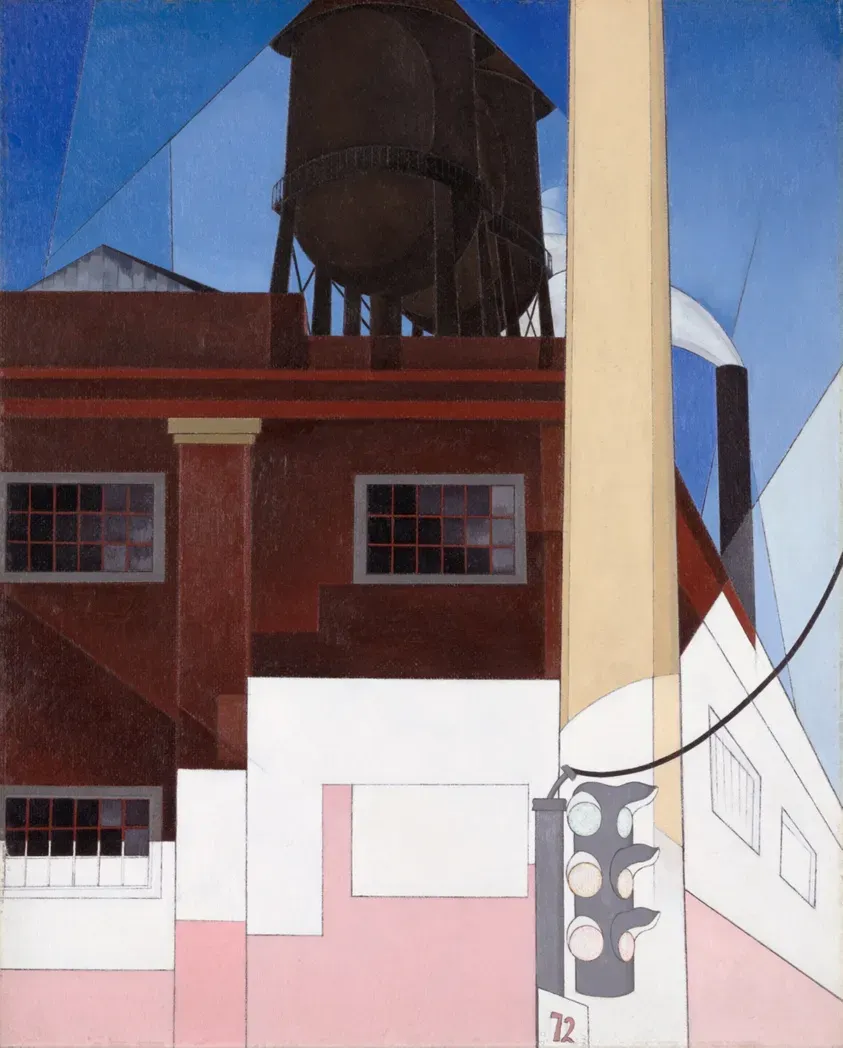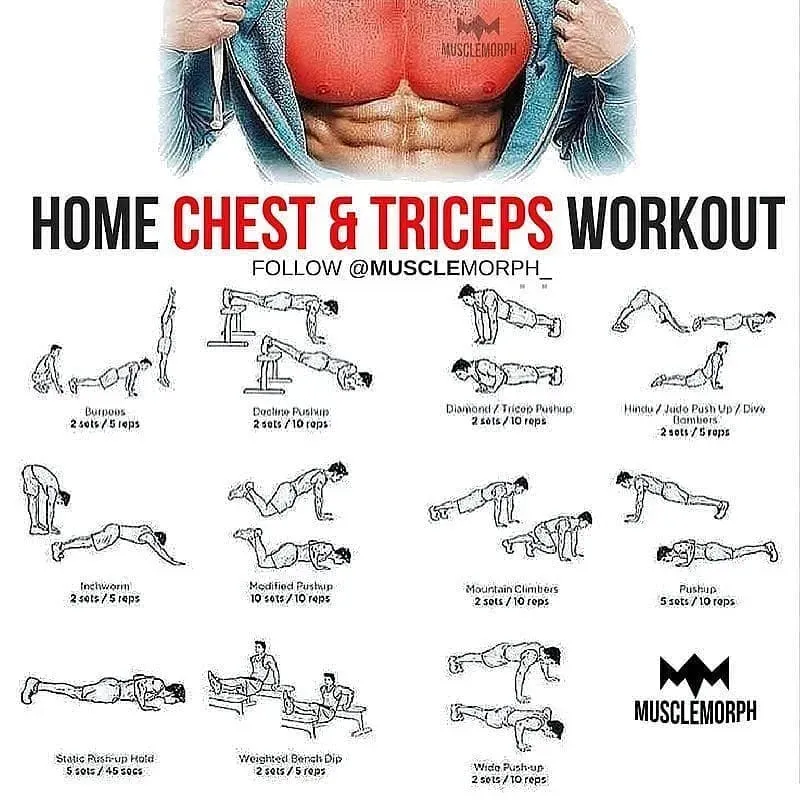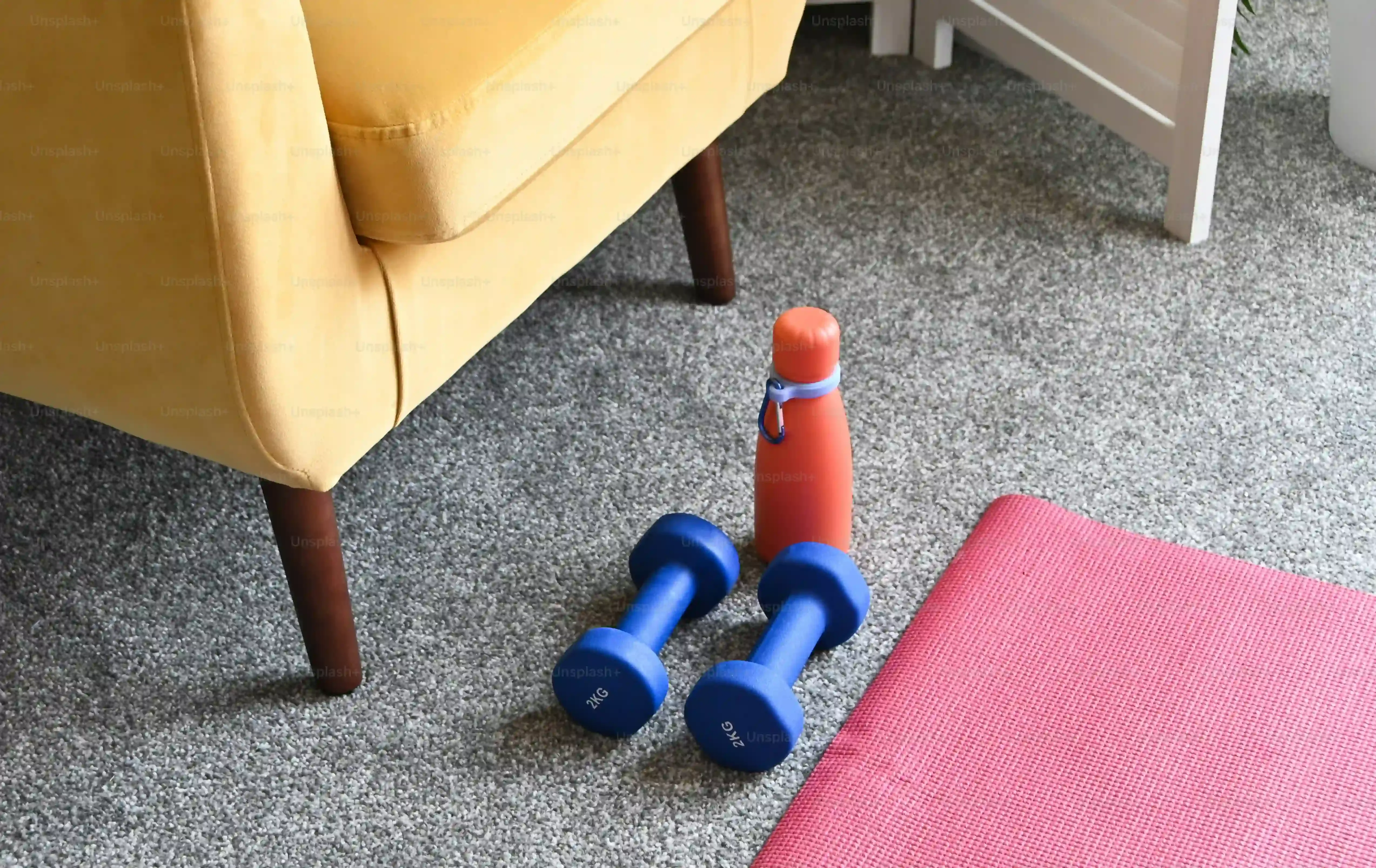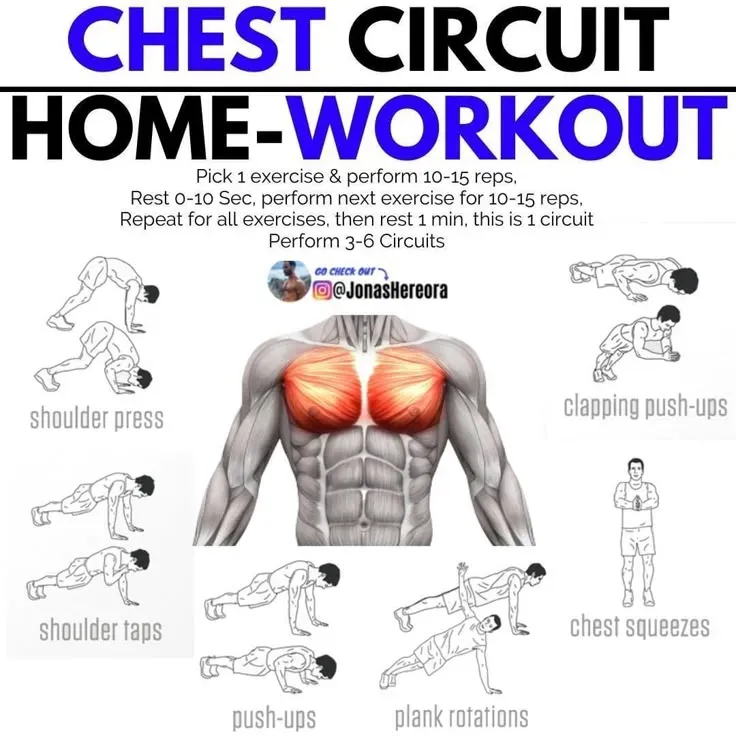Table of Contents
Let's be honest. Getting to the gym isn't always in the cards. Maybe time is tight, maybe the weather's awful, or maybe you just prefer the comfort of your own space. Whatever the reason, the idea of building a solid chest without barbells and benches might seem like a pipe dream. But guess what? It's not.
Why Bother with a Full Chest Workout at Home?

Why Bother with a Full Chest Workout at Home?
Ditch the Commute, Keep the Gains
Look, life happens. The idea of fighting traffic or packing a gym bag after a long day sounds exhausting sometimes. That's where a full chest workout at home shines. You roll out of bed, grab a quick coffee, and you're ready. No waiting for the bench press, no wiping down someone else's sweat. It's efficient, it's convenient, and it removes a major barrier for consistency – showing up is half the battle, and when the gym is your living room, showing up is easy.
Think about the time saved. An hour round trip commute to the gym, plus the workout itself, easily eats up two hours. You can get a killer chest session done at home in 30-45 minutes, tops. That extra time is yours. Read a book, cook a decent meal, chase the dog around. It’s not just about fitness; it’s about integrating fitness into a busy life without sacrificing everything else.
Real Results Without the Rack
Maybe you've heard you can't build serious muscle without heavy weights. That's frankly outdated thinking. Your body doesn't know if the resistance comes from a fancy machine or your own body weight plus gravity. A well-structured full chest workout at home using exercises like push-up variations, dips (if you have parallel bars or sturdy chairs), and isometric holds can provide plenty of stimulus for muscle growth and strength.
Plus, bodyweight training often forces you to engage stabilizing muscles you might neglect on fixed-path machines. This translates to better functional strength and joint stability. So, why bother with a full chest workout at home? Because it's accessible, effective, and builds resilient strength using the most convenient equipment you own: your body.
What's holding you back from starting your home chest routine today?
Getting Ready: WarmUp Before Your AtHome Chest Session

Getting Ready: WarmUp Before Your AtHome Chest Session
Don't Skip This Part, Seriously
Alright, before you drop down and start pumping out push-ups like you're trying to set a world record, let's talk warm-up. Skipping this is like trying to start a cold engine and expecting peak performance – you're just asking for trouble. A proper warm-up for your full chest workout at home isn't just about getting your blood flowing; it's about waking up those muscles, mobilizing your joints, and preparing your nervous system for the work ahead. You want your shoulders loose, your wrists ready, and your upper back engaged. Five to ten minutes is all it takes to potentially save yourself from a pulled muscle or nagging joint pain later.
Here are a few simple moves to get you prepped:
- Arm Circles (forward and backward, small to large)
- Shoulder Rolls (forward and backward)
- Wrist Circles and Flexions
- Cat-Cow Stretch (gets the spine moving)
- Light Thoracic Rotations (seated or standing)
The Core Moves for Your Full Chest Workout at Home

The Core Moves for Your Full Chest Workout at Home
The Humble Push-Up, Reimagined
Alright, let's get down to brass tacks. The bedrock of any effective full chest workout at home is the push-up. You might think you know the push-up, but it's far more versatile than just dropping to the floor. The standard push-up, performed with hands slightly wider than shoulder-width and lowering your chest until it's just off the ground (maintain a straight line from head to heels, no sagging hips or piked butts), hits the entire chest muscle group, along with your shoulders and triceps.
But the magic happens when you start playing with hand placement. Want to emphasize the outer sweep of your chest? Go wider with your hands. Looking to build that inner pec line? Bring your hands closer together, maybe even forming a diamond shape with your thumbs and index fingers directly under your chest. Each small adjustment shifts the load and recruits muscle fibers differently, turning a single exercise into a multi-tool for your chest development.
Hitting Angles: Upper and Lower Chest
Building a balanced chest means hitting it from different angles, something often associated with adjustable benches. But you can replicate this at home with just a sturdy chair, coffee table, or even a stack of books. To target the lower chest, perform incline push-ups. Place your hands on a raised surface and do your push-ups. The higher the surface, the easier it is, making this great for beginners too.
Conversely, to hammer the often-stubborn upper chest, you need decline push-ups. Elevate your feet on that same sturdy surface (chair, couch, bed) and place your hands on the floor in a standard push-up position. This shifts more of your body weight onto your upper body and forces those upper pec fibers to work overtime. Mastering these variations is crucial for a comprehensive full chest workout at home.
Think of these variations as your adjustable bench:
- Standard Push-up: Overall chest, shoulders, triceps.
- Wide Push-up: Emphasizes outer chest.
- Close/Diamond Push-up: Works inner chest and triceps hard.
- Incline Push-up: Targets lower chest, easier variation.
- Decline Push-up: Targets upper chest, more challenging.
Mixing It Up: Variations and Progression for Your Chest

Mixing It Up: Variations and Progression for Your Chest
Why Stick to the Same Old Thing?
you've mastered the basic push-up variations we talked about. You can crank out a decent set of standard, wide, and even decline push-ups. Now what? Sticking to the exact same routine week after week is a surefire way to hit a plateau. Your muscles are smart; they adapt. To keep seeing results from your full chest workout at home, you've got to keep challenging them in new ways. This isn't about doing random exercises; it's about intelligently varying the stimulus.
Think of it like this: Would you eat the same meal every single day? Probably not, unless you're actively trying to hate food. Your muscles feel the same way about training. Introducing new angles, different tempos, or adding stability challenges forces your body to keep adapting, growing stronger and more defined. It keeps things interesting too, which is huge for staying consistent when your gym is just a few feet away.
Adding Intensity: Tempo and Stability
Variations aren't just about hand placement or elevation. You can manipulate the exercise itself. Try slowing down the lowering (eccentric) phase of your push-ups, maybe taking three or four seconds to reach the bottom. This increases time under tension, a key factor for muscle growth. Or, introduce pauses – hold the bottom position for a second or two before pushing back up (isometric hold). These small tweaks make familiar exercises feel brand new and significantly harder, boosting the effectiveness of your full chest workout at home.
Another way to ramp up the intensity and recruit more stabilizing muscles is to introduce instability. If you have gymnastic rings or even sturdy suspension straps, doing push-ups with your hands suspended is a brutal test of strength and control. If not, try placing your hands on basketballs or even stacked towels (carefully!). Just be mindful of form; quality over quantity always wins.
Variation Type | How it Works | Benefit for Chest |
|---|---|---|
Tempo Training (Slow Eccentric) | Control the lowering phase (e.g., 3-4 seconds down) | Increases time under tension, promotes muscle growth |
Isometric Holds | Pause at the bottom or mid-point | Builds strength in specific ranges of motion, increases intensity |
Stability Challenge | Perform push-ups on unstable surfaces (rings, balls) | Engages more stabilizing muscles, improves overall strength and control |
Progressing Beyond Bodyweight Basics
Sooner or later, bodyweight push-ups, even the harder variations, might start feeling too easy for your full chest workout at home. This is a good problem to have! It means you're getting stronger. Progression isn't just about doing more reps, although that's one way. You can increase the range of motion by using push-up handles or stacking books under your hands to allow your chest to go deeper than the floor. This deep stretch under tension is excellent for muscle fibers.
If you have resistance bands, loop one across your back and hold the ends in your hands during push-ups. The band provides increasing resistance as you push up, mimicking the feel of adding weight. If you're feeling particularly strong and have a sturdy surface, plyometric or explosive push-ups (pushing off the ground with enough force for your hands to leave the floor) are fantastic for power and building fast-twitch muscle fibers. Don't be afraid to get creative with making exercises harder as you progress in your full chest workout at home.
Your Home Chest Game Plan
So, there you have it. Building a capable chest doesn't require a gym membership or a garage full of weights. A smart, consistent full chest workout at home, using variations of classic moves and focusing on proper form, gets the job done. It might not be glamorous, and you won't have a spotter yelling encouragement (or questionable advice), but the results are real. Stick with it, push yourself, and you'll find that your living room floor is a perfectly legitimate place to build some serious pec power. No excuses left, just reps.
